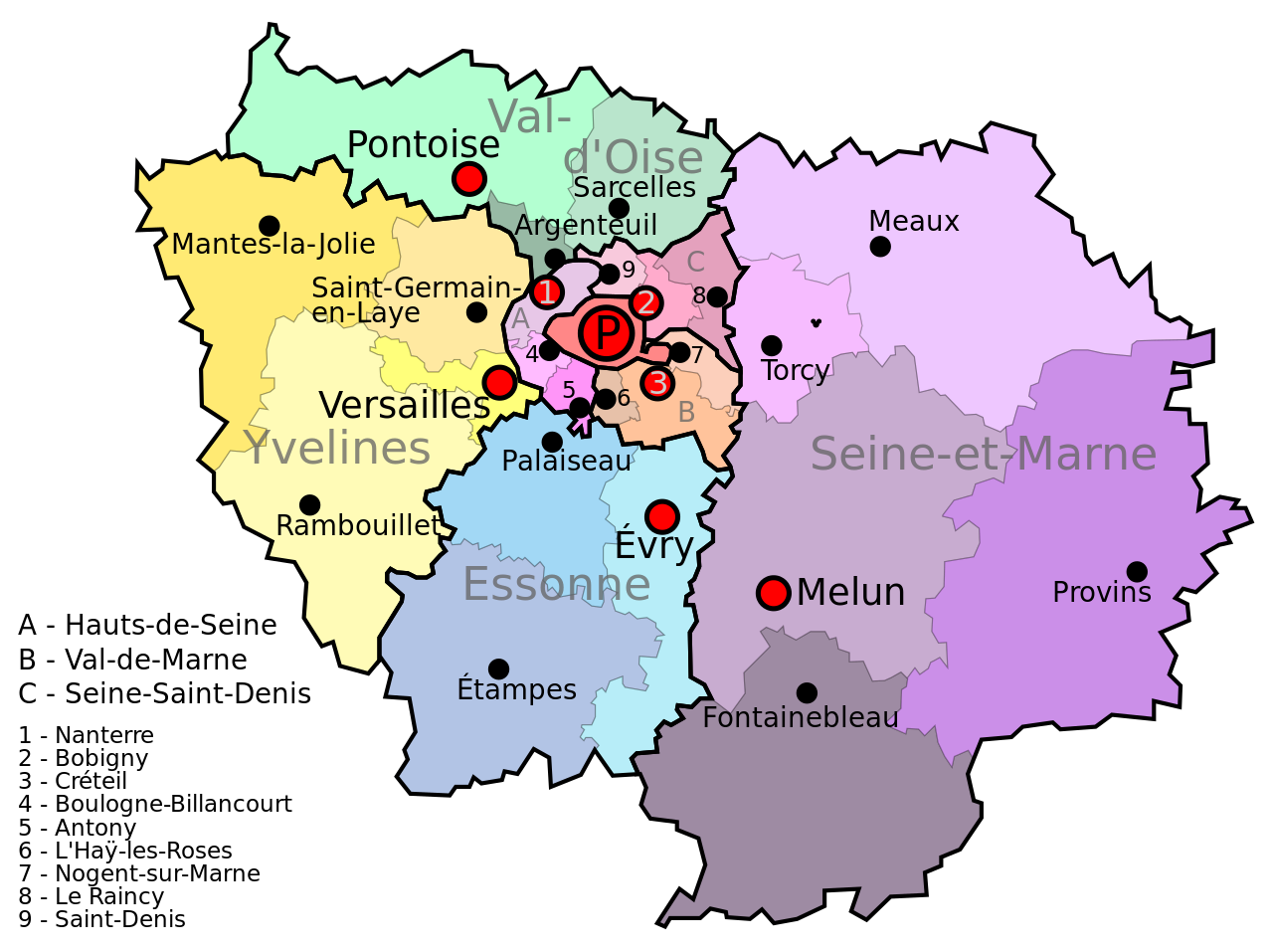Paris, the City of Lights, is not only renowned for its iconic landmarks like the Eiffel Tower and Louvre Museum, but also boasts impressive architectural wonders, found in the ile de France, that deserve exploration.
This summer, if you’re in Paris, go venture beyond the tourist hotspots and embark on these five architectural walks to witness the brilliance of brutalist and postmodernist structures crafted by esteemed architects like Ricardo Bofill and Jacques Kalisz. Most of these are found in the ile de France region and easily accessible by public transport like the Metro, the RER, or the transilien.
- Espaces d’Abraxas, Noisy-le-Grand
Located in the Mont d’Est district of Noisy-le-Grand, this massive residential complex was designed in 1983 by Spanish architect Ricardo Bofill. Also known as “Portes de Paris,” the area was urbanized in the 1970s as part of the expansion of Marne-la-Vallée. The neo-classical inspiration of Espaces d’Abraxas reflects Ricardo Bofill’s postmodernist style, exemplified by the renowned Antigone district in Montpellier.
With 600 apartments spread across two buildings, Palacio (an 18-story structure) and Théâtre (with a semi-cylindrical form), Bofill envisioned it as the “palace of the people,” dedicating two-thirds of the space to social housing. Its monumental aesthetic has attracted filmmakers, making it a backdrop for movies like “Brazil” (1985) and “Hunger Games” (2014).
How to get there: Take RER A and stop at Noisy-le-Grand Mont d’Est.
2. Les Choux, Créteil
Step into a retro-futuristic world with Les Choux in Créteil, resembling an AI-inspired masterpiece or something straight out of a sci-fi film.
These cauliflower-shaped buildings came to life in 1974 under the guidance of architect Gérard Grandval.
The project was constructed on a former vegetable farming site, which also housed the largest sauerkraut factory in the Paris region.
Although the idea of green balconies didn’t make it to the final design, the ten circular 14-story towers became an emblem of 1970s architecture, alongside the adjacent Palais de Justice. Les Choux de Créteil remains the most renowned work of Gérard Granval, who contributed to other iconic French residences from 1960 to 2018.
How to get there: Take metro line 8 and stop at Créteil Université.
3. Les Arènes de Picasso, Noisy-le-Grand
Back in Noisy-le-Grand, another architectural gem awaits Les Arènes de Picasso. Designed by Spanish architect Manuel Núñez Yanowsky, this abstract representation of an overturned cart, affectionately nicknamed “le camembert” or “le tambour” by locals, consists of 540 apartments, a nursery, schools, and shops.
An avant-garde postmodernist manifesto, the building was constructed in 1981 with the vision of a “Versailles for the people.”
Yanowsky aimed to combat the ghettoization of Parisian suburbs by harmonizing the urban fabric to improve the social conditions of its residents.
The baroque and unusual design, inspired by Gaudi, takes its name from Place Pablo Picasso, where it stands. Notably, Les Arènes de Picasso featured in Stéphanie de Monaco’s music video “Ouragan” (1986).
How to get there: Take RER A and stop at Noisy-le-Grand Mont d’Est.
4. Centre National de la Danse, Pantin
In 1998, the Centre National de la Danse was established to support and develop the dance sector. The city of Pantin provided a monumental building designed in 1965 by the brutalist architect Jacques Kalisz (also known for the Nanterre School of Architecture).
The building initially served as the administrative center of Pantin, as the communist mayor aimed to break away from bourgeois architecture. Kalisz crafted a unique building with geometric façades inspired by Aztec motifs and a monumental double-circulation staircase.
Unfortunately, the “Palais du peuple” (as named by its creator) was poorly insulated and fell into disuse after twenty years, despite numerous attempts by users to improve the insulation with measures like wall-to-wall carpets. In 1998, the building found new life as the Centre National de la Danse, as demolishing it proved too costly.
How to get there: Take RER E and stop at Pantin.
5. Arcades du Lac de Montigny-le-Bretonneux
Conclude your architectural journey around the ile de France region in Montigny-le-Bretonneux with Ricardo Bofill’s Arcades du Lac, a part of a program combining pavilions and social housing in the development of Saint-Quentin-en-Yvelines in 1981.
Resembling a viaduct, inspired by the Chenonceau Castle, the Arcades aimed to reconcile monumentality with popular habitat, drawing inspiration from Versailles and ancient Greece. In the 1980s, the Arcades’ counterpart, Le Temple and Les Templettes, were built across the lake in Voisins-le-Bretonneux. The ensemble indeed recalls the grandeur, symmetry, and green spaces of the Versailles Palace.
How to get there: Take Transilien U and stop at Saint-Quentin-en-Yvelines.
From neo-classical palaces to AI-inspired structures, these architectural walks promise an unforgettable journey through the Paris suburb’s diverse architectural heritage. Immerse yourself in the captivating stories of visionary architects, each leaving a unique mark on the ever-evolving urban landscape of the City of Lights.
So, put on your walking shoes and embark on a spectacular adventure that will deepen your appreciation for Francilien living, where modernity blends harmoniously with history.

